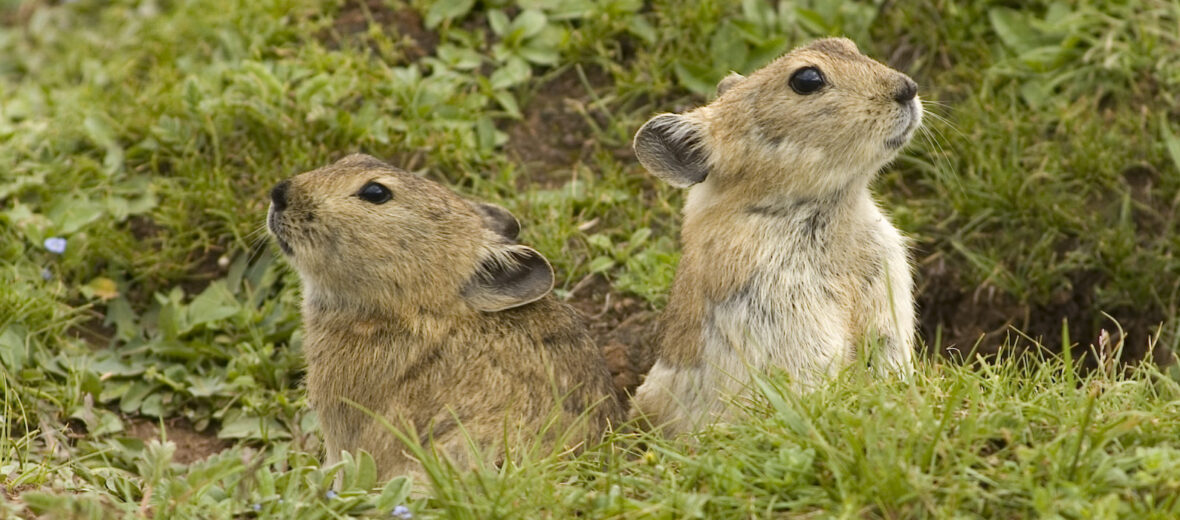
The plateau pika, aka black-lipped pika, hails from the Tibetan Plateau in China, India, and Nepal. They prefer to dwell in higher elevations of up to 16,400 feet. Their preferred habitats are alpine deserts, steppes, meadows, and also tropical and subtropical montane forests. Even though they face the threats of habitat destruction and competition for food by the agricultural industry, as well as hunting and trapping, these critters are still abundant and listed as Least Concern by the IUCN. Their numbers are decreasing though.
First the Stats…
Scientific name: Ochotona curzoniae
Weight: Up to 4.9 ounces
Length: Up to 6.7 inches
Lifespan: Up to 16.33 months
Now on to the Facts!
1.) These critters are diurnal (active during the day).
2.) They are non-hibernating mammals.
3.) The plateau pika is considered a keystone species due to their role in recycling nutrients in soil and providing food for predatory animals.
4.) Foxes, weasels, falcons, Asian pole cats, upland buzzards, owls, and brown bears all prey on these pikas.
5.) Poisoning campaigns by Chinese populations are aimed at eliminating these picas, since they are seen as a competitive animal to ranchers.
But wait, there’s more on the plateau pika!
6.) Plateau pikas are considered both monogamous (mate with only 1 partner) and polygynandrous (both males and females have multiple partners).
7.) Females are capable of producing up to 5 litters of up to 7 offspring in their lifetime.
Did you know…?
The females are philopatric (form reproductive alliances, and help each other in the care of their offspring).
8.) They are social critters that live in families of 2 – 5 adults plus their offspring.
9.) Their cold weather adaptations include their high resting metabolic rate and non-shivering thermogenesis coupled with the production of leptin which is a thermogenesis regulatory hormone. Thermogenesis is the process of producing heat in organisms.
10.) The Sanjiangyuan National Nature Reserve in China, which makes up most of the Tibetan Plateau, has been designated as a protected area for these pikas and other endangered species as well.
11.) Bog sedge, flowers, grains, grasses, krobesia, leaves, nuts, perennials, seeds, and turf make up their diet.
Now a Short Plateau Pika Video!
Be sure to share & comment below! Also, check out the Critter Science YouTube channel. Videos added regularly!
Want to suggest a critter for me to write about? Let me know here.
Some source material acquired from: Wikipedia & IUCN
Photo credit: Kunsang



